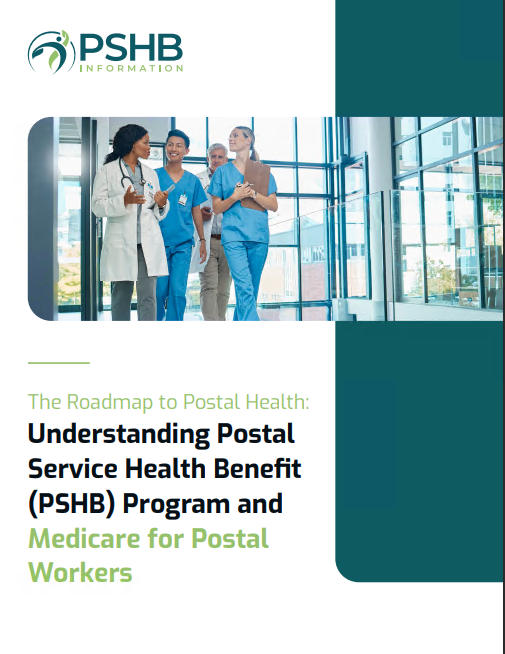Key Takeaways
-
Comparing premiums across different health plans ensures you find a balance between affordability and comprehensive coverage.
-
As a USPS employee or retiree, understanding how factors like Medicare integration and out-of-pocket costs impact your total expenses is crucial.
Why Premiums Matter More Than You Think
When choosing a health plan, your monthly premium is just one piece of the puzzle. While it’s easy to focus on this upfront cost, the real question is: What are you getting in return? Lower premiums might seem attractive, but if they come with high deductibles and copayments, you could end up paying more in the long run.
For USPS employees and retirees, selecting the right plan requires looking beyond just the premium and considering other factors like government contributions, out-of-pocket maximums, and Medicare coordination. Ignoring these aspects could result in surprise medical bills, increased copayments, or limited access to the providers and medications you need.
How to Compare Premiums Like a Pro
Comparing health plans isn’t just about picking the cheapest option. Here’s what you should consider to make sure you’re getting the best value without sacrificing coverage:
1. Understand the Total Cost of Your Plan
Your total healthcare expenses aren’t limited to just the premium. Be sure to consider:
-
Deductibles – The amount you pay before insurance starts covering costs.
-
Copayments – Fixed amounts for doctor visits, prescriptions, and services.
-
Coinsurance – The percentage of costs you share after meeting your deductible.
-
Out-of-pocket maximums – The most you’ll pay before the plan covers 100% of covered services.
A plan with a low monthly premium might have a high deductible, meaning you’ll pay more out-of-pocket before your insurance even kicks in. On the other hand, a plan with a slightly higher premium could come with lower copayments and deductibles, making it the better choice if you have regular medical needs.
2. Factor in Government Contributions
For USPS employees and retirees, the government pays a portion of your premium. In 2025, this contribution covers about 70% of the total premium, which significantly lowers your out-of-pocket cost. However, plans vary in how they split the remaining 30%, so it’s important to check how much you’ll actually be paying each month.
Understanding how much you are responsible for is essential, as plans may shift costs to higher deductibles or coinsurance in exchange for a slightly lower premium. Some USPS retirees also qualify for Medicare premium reimbursements, which further impact overall costs.
3. Consider Medicare Enrollment
If you’re a retiree eligible for Medicare, enrolling in Medicare Part B may impact your premium and total costs. Many plans offer additional benefits or even lower deductibles and copayments when paired with Medicare. However, failing to enroll in Medicare when required could result in penalties and higher expenses.
Some health plans waive deductibles and lower coinsurance if you have both Medicare Part A and Part B. This could be a significant cost-saving measure for retirees, reducing the amount spent on doctor visits, hospital stays, and prescription drugs.
4. Look at Coverage for Prescription Drugs
Prescription drug costs can add up quickly, especially if you have ongoing medical needs. In 2025, Medicare Part D includes a $2,000 out-of-pocket cap, reducing your long-term prescription expenses. If you’re still working, check how your plan handles prescription drug costs to ensure you’re not overpaying.
-
Some plans have tiered drug pricing, where generics cost less than brand-name medications.
-
Mail-order pharmacy options can reduce costs for maintenance medications.
-
High-cost specialty drugs may have additional coinsurance requirements.
5. In-Network vs. Out-of-Network Costs
Choosing an in-network provider can significantly reduce costs. Many plans have higher coinsurance and copayments if you go out of network, so always review your plan’s network coverage before signing up. If you travel frequently or live in a rural area, a nationwide network may be a better choice than a regional one.
If you split time between two states, such as spending part of the year in one location and the rest in another, make sure your plan offers adequate provider access in both places to avoid unexpected expenses.
Making the Right Choice for Your Budget and Needs
Now that you know what to look for, let’s break down how to make an informed decision:
Step 1: Compare Plan Brochures
Each USPS health plan provides a summary of benefits that outlines premium costs, deductibles, and coverage details. Reviewing these side by side will help you spot differences in coverage and costs.
Step 2: Calculate Your Expected Healthcare Expenses
Think about how often you visit doctors, specialists, and fill prescriptions. If you have chronic conditions or expect high medical costs, a plan with a higher premium but lower out-of-pocket expenses may be more cost-effective.
-
If you anticipate frequent doctor visits, opt for a plan with lower copayments.
-
If you rarely need medical care, a higher-deductible plan with a lower premium might make sense.
Step 3: Review Medicare Coordination (If Applicable)
If you’re already enrolled in Medicare, check how your plan integrates with it. Some plans provide Medicare Part B premium reimbursements or reduced cost-sharing for enrollees, which can help lower your total costs.
Many USPS retirees see significant cost reductions when pairing Medicare with a compatible USPS health plan, often eliminating or reducing deductibles and copayments altogether.
Step 4: Consider Family Coverage Options
If you’re covering dependents, check how family premiums compare across different plans. Some plans offer better savings for families, while others may be more cost-effective for individuals.
Step 5: Check for Additional Benefits
Many USPS health plans offer perks like:
-
Vision and dental coverage
-
Wellness programs
-
Hearing aid benefits
-
Telehealth services
-
Preventive care incentives
Some plans provide free wellness check-ups and screenings, reducing long-term healthcare expenses by catching potential issues early.
How Your Choice Impacts Long-Term Healthcare Costs
Your health plan isn’t just about the next year—it’s an investment in your future. The plan you pick today can impact:
-
Your healthcare costs in retirement
-
How well your plan coordinates with Medicare
-
Your access to specialists and care
-
The financial burden on your spouse or dependents
Your healthcare needs may change, so it’s essential to evaluate your coverage every year to ensure you’re still getting the best value.
Finding the Right Balance for Peace of Mind
Selecting a health plan is a personal decision that depends on your budget, health status, and future plans. Whether you’re still working or retired, balancing affordability and quality coverage is key.
If you need help navigating your options, reach out to a licensed agent listed on this website for expert guidance on choosing the best plan for your situation.










